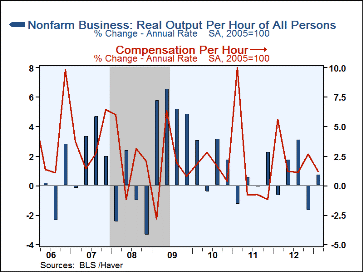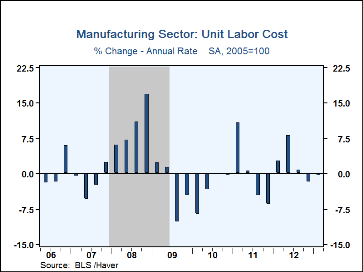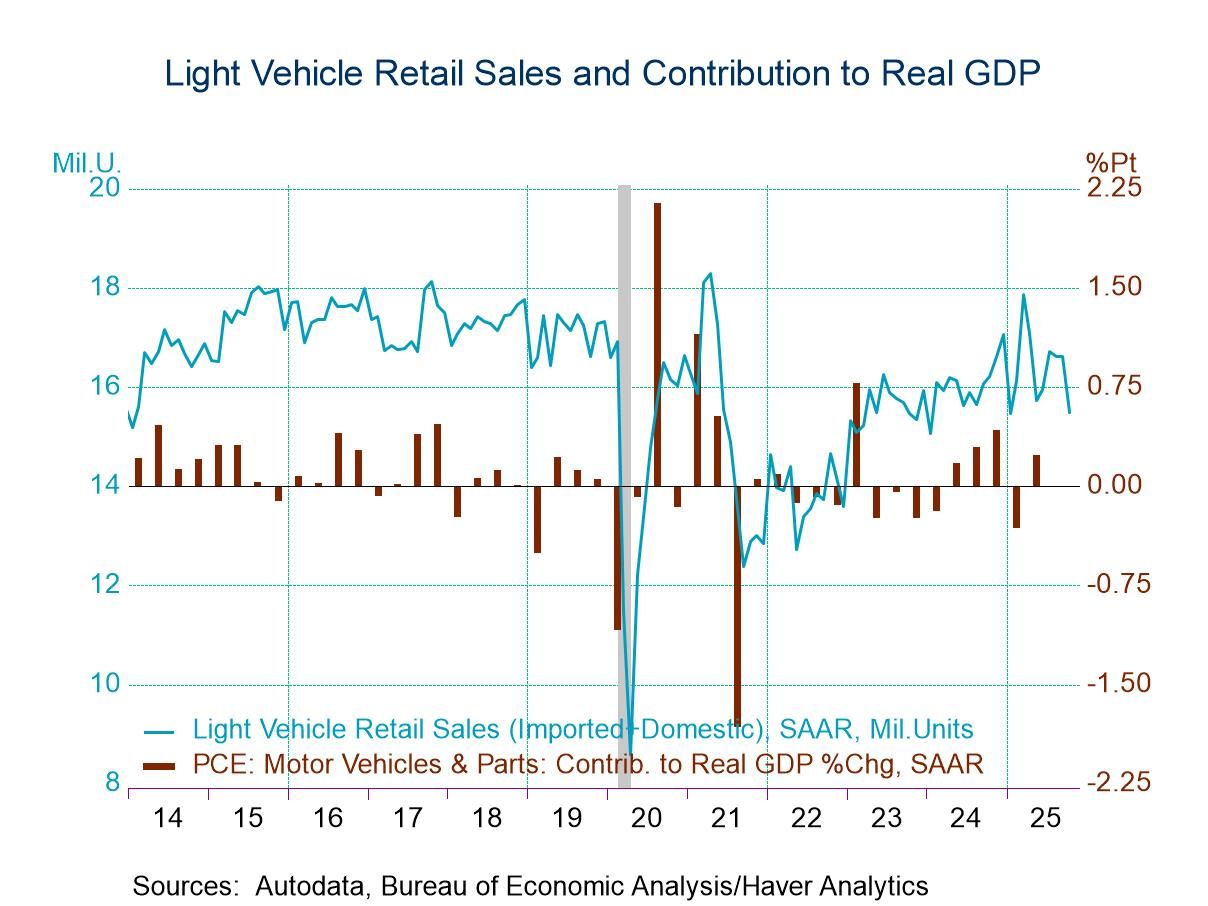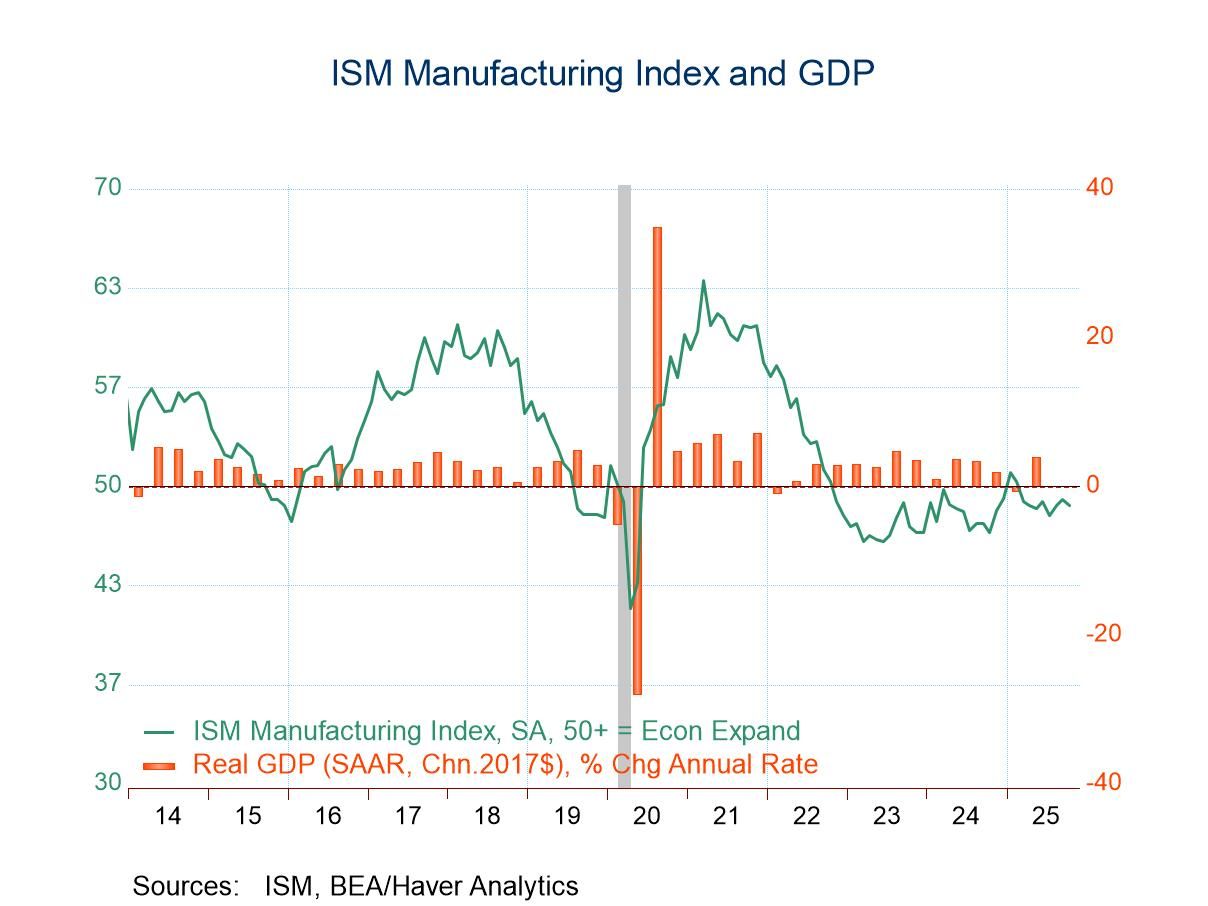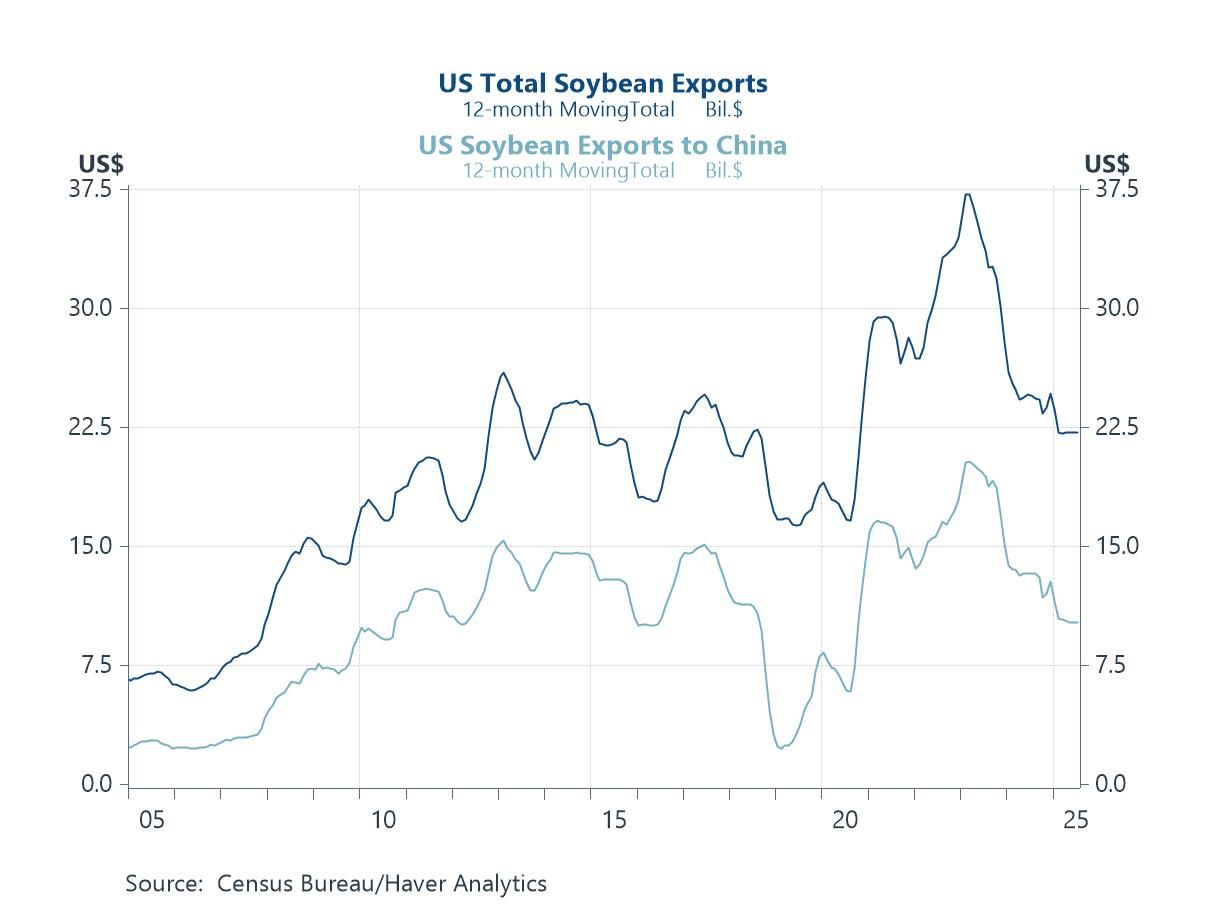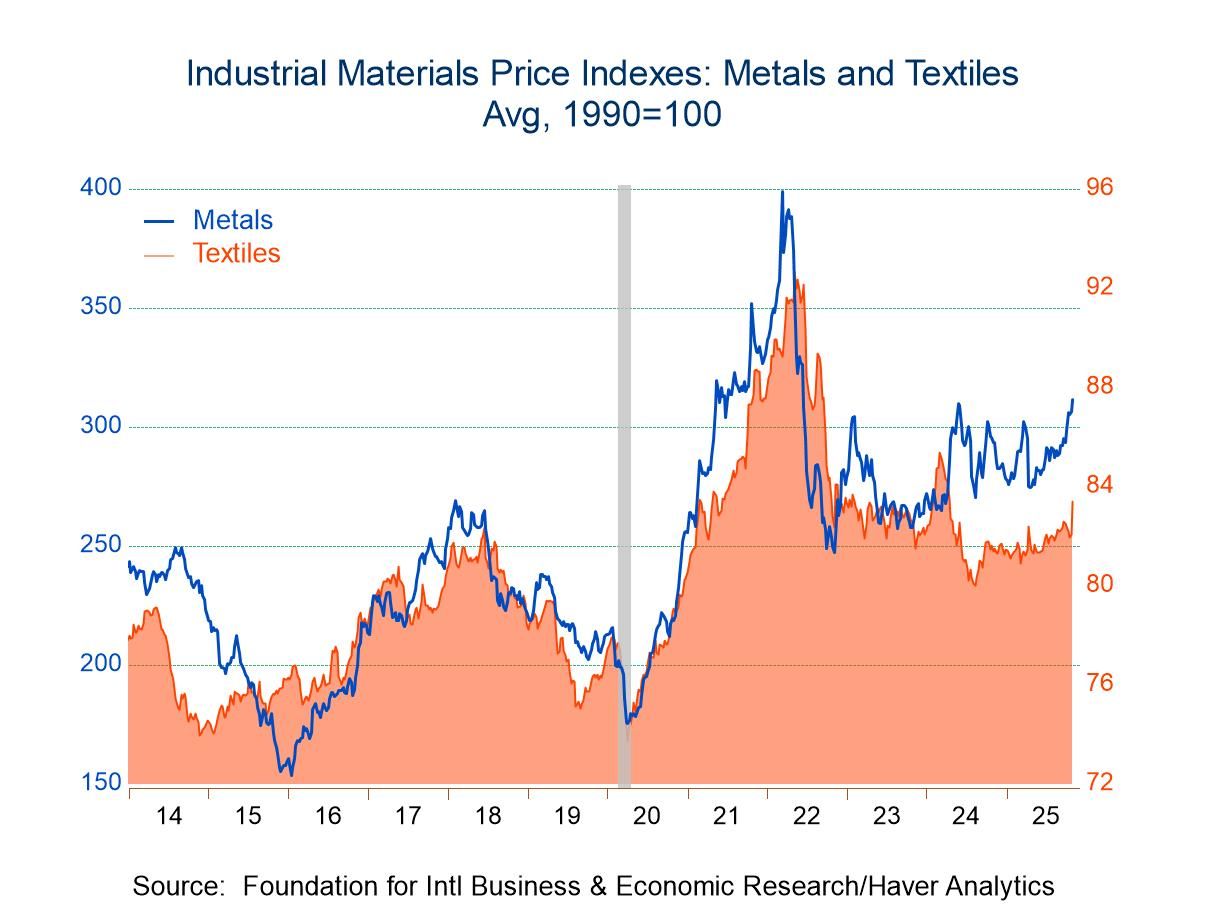 Global| May 02 2013
Global| May 02 2013U.S. Worker Productivity Recovers Slightly
by:Tom Moeller
|in:Economy in Brief
Summary
Nonfarm business sector productivity during Q1'13 rose 0.7% (SAAR). That was a rebound from the 1.7% decline during Q4'12. That left the y/y gain of 0.9% on a par with the slow growth rates of 2011 and 2012. Real output rose at a 2.5% [...]
Nonfarm business sector productivity during Q1'13 rose 0.7% (SAAR). That was a rebound from the 1.7% decline during Q4'12. That left the y/y gain of 0.9% on a par with the slow growth rates of 2011 and 2012. Real output rose at a 2.5% rate (2.5% y/y) while hours worked rose 1.8% (1.5% y/y). Improved productivity growth last quarter was accompanied by a lessened 1.2% rise (1.6% y/y) in compensation per hour. This combination of improved productivity and lower compensation caused unit labor costs to nudge up at a 0.5% annual rate (0.6% y/y) in Q1'13. That followed a 4.4% Q4 surge.
The productivity picture continued to be encouraging in the factory sector. The 3.8% quarterly gain left the y/y increase at 1.7% which also was on a par with the prior two years. Output rose 5.6% (2.6% y/y) while hours worked increased 1.7% (0.9% y/y). Compensation growth accelerated to 3.3% (3.3% y/y). The improved gain productivity lowered factory sector unit labor costs by 0.5% (+1.6% y/y).
The productivity & cost figures are available in Haver's USECON database.
| Productivity & Costs (SAAR,%) | Q1'13 | Q4'12 | Q3'12 | Q1 Y/Y | 2012 | 2011 | 2010 | |
|---|---|---|---|---|---|---|---|---|
| Nonfarm Business Sector | ||||||||
| Output per Hour (Productivity) | 0.7 | -1.7 | 3.1 | 0.9 | 0.7 | 0.6 | 3.1 | |
| Compensation per Hour | 1.2 | 2.7 | 1.2 | 1.6 | 1.4 | 2.6 | 2.1 | |
| Unit Labor Costs | 0.5 | 4.4 | -1.9 | 0.6 | 0.7 | 2.0 | -1.0 | |
| Manufacturing Sector | ||||||||
| Output per Hour | 3.8 | 2.2 | -0.3 | 1.7 | 1.9 | 1.4 | 6.4 | |
| Compensation per Hour | 3.3 | 0.4 | 0.6 | 3.3 | 2.2 | 2.8 | 1.1 | |
| Unit Labor Costs | -0.5 | -1.8 | 0.8 | 1.6 | 0.3 | 1.4 | -5.0 | |
Tom Moeller
AuthorMore in Author Profile »Prior to joining Haver Analytics in 2000, Mr. Moeller worked as the Economist at Chancellor Capital Management from 1985 to 1999. There, he developed comprehensive economic forecasts and interpreted economic data for equity and fixed income portfolio managers. Also at Chancellor, Mr. Moeller worked as an equity analyst and was responsible for researching and rating companies in the economically sensitive automobile and housing industries for investment in Chancellor’s equity portfolio. Prior to joining Chancellor, Mr. Moeller was an Economist at Citibank from 1979 to 1984. He also analyzed pricing behavior in the metals industry for the Council on Wage and Price Stability in Washington, D.C. In 1999, Mr. Moeller received the award for most accurate forecast from the Forecasters' Club of New York. From 1990 to 1992 he was President of the New York Association for Business Economists. Mr. Moeller earned an M.B.A. in Finance from Fordham University, where he graduated in 1987. He holds a Bachelor of Arts in Economics from George Washington University.


